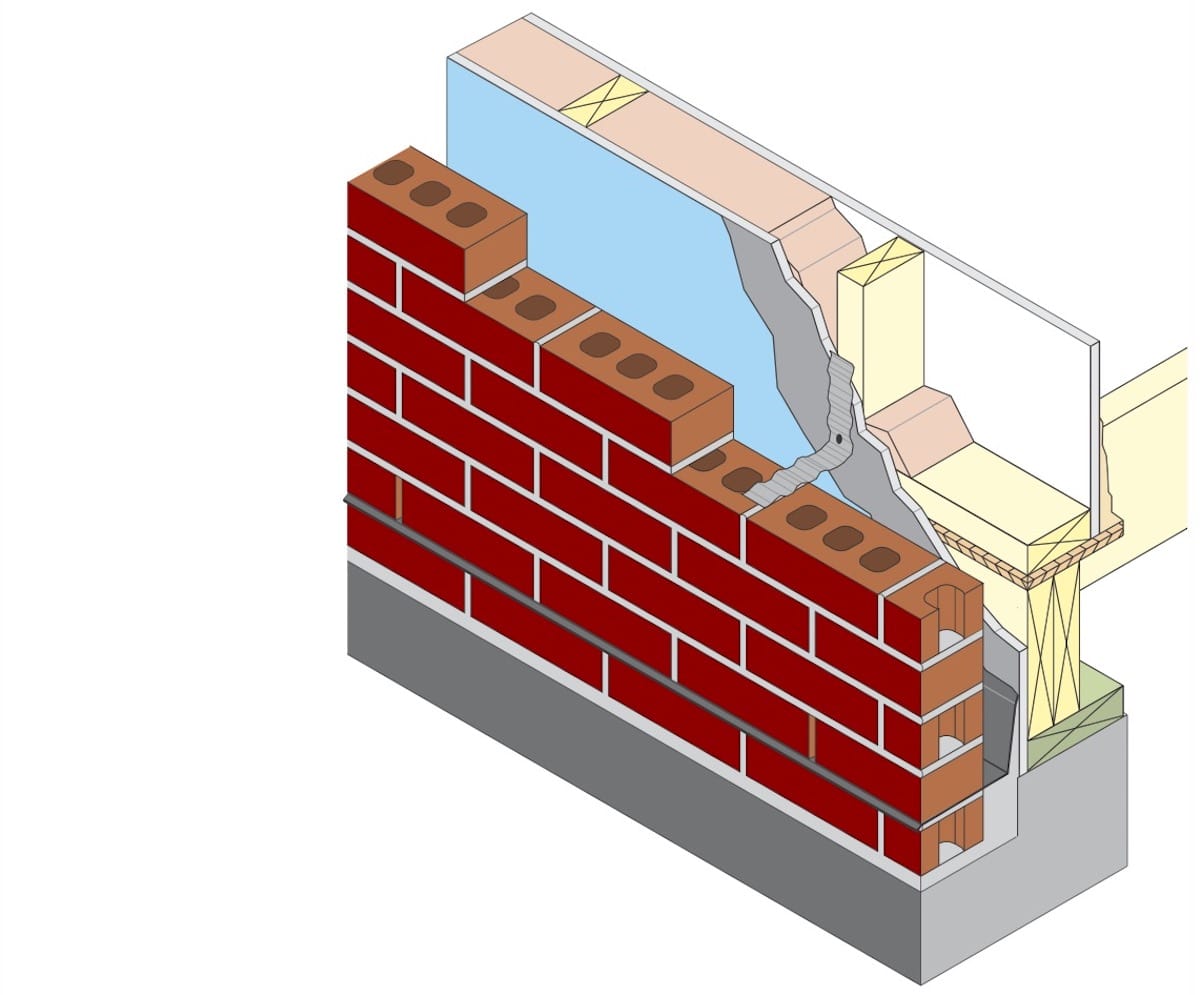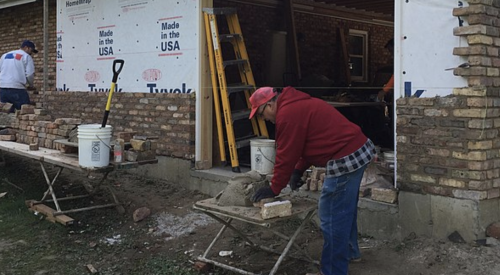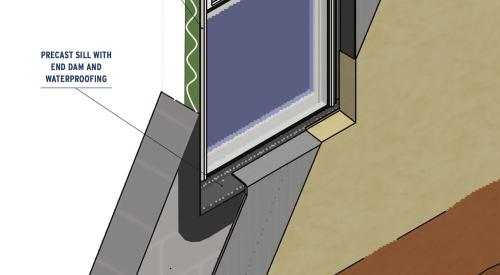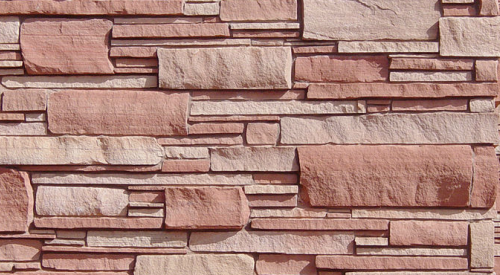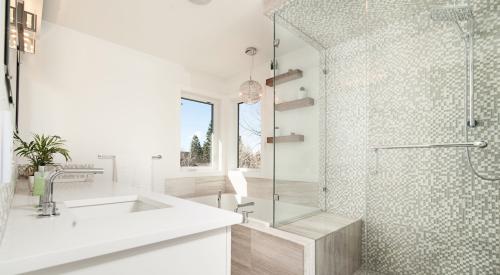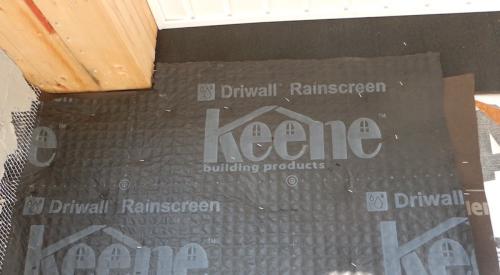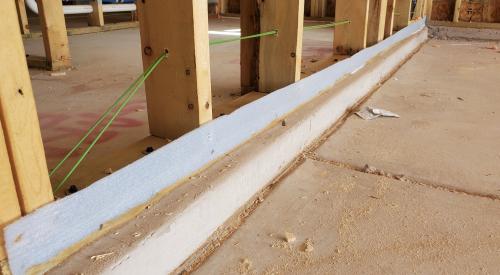I see potential drainage problems with brick veneer cladding in the homes I inspect for our builder clients. In some cases, the drainage cavity behind the brick is clogged with mortar, while others show sealed weep holes at the base of the wall. Both problems, increasingly caused by the use of less-skilled, less-experienced bricklayers in a tight labor market, can lead to expensive warranty issues and rework.
What Causes Moisture Problems in Brick Veneer Walls and What to Do About It
The first thing to remember about providing proper drainage behind brick veneer cladding is that brick is porous. During a heavy rain, it can absorb water like a sponge through the full depth of the brick. In addition, small ledges and horizontal surfaces along the wall often allow water to puddle, thus making the weather resistive barrier (WRB) more susceptible to being breached.
The result is that some amount of water always gets behind the veneer, a reality mitigated by a free-draining, nominal 1-inch-wide cavity between the brick and the structural frame (Fig. 1, below). With through-wall flashing and proper weeps, that gap allows incidental water to escape and significantly reduces moisture-related problems. Weep holes also help keep the drainage cavity dry through passive airflow.
Weep holes are not only needed at the base of the walls, but also below windowsills, at all lintels (including those over garage doors and window and door heads), and where horizontal structural elements such as balconies and terraces interrupt the drainage plane.
If the drainage cavity or weep holes are blocked, water gets trapped and will eventually work its way past even the best-detailed WRB. I’ve heard horror stories about pest intrusion, rot and mold, and even a builder buying back a home after trapped water caused catastrophic damage.
RELATED
- The Right Way to Waterproof Recessed Windows in Concrete Block Walls
- How to Manage Moisture in Walls: Tips for Designing and Building
- Framing Walls to Combat Moisture
3 Ways to Manage Moisture in Brick Veneer Walls
1. Use Mortar Cleanouts to Help Keep Drainage Cavities Mortar-Free
The best way to keep the wall's drainage cavity mortar-free is to use mortar cleanouts—a matter of leaving out every other brick at the base of the wall.
Cleanouts make it easy to remove mortar that drops from behind the veneer to the base of the wall during installation. Once the rest of the job is done and the cavity is cleaned out, the missing bricks are put in place.
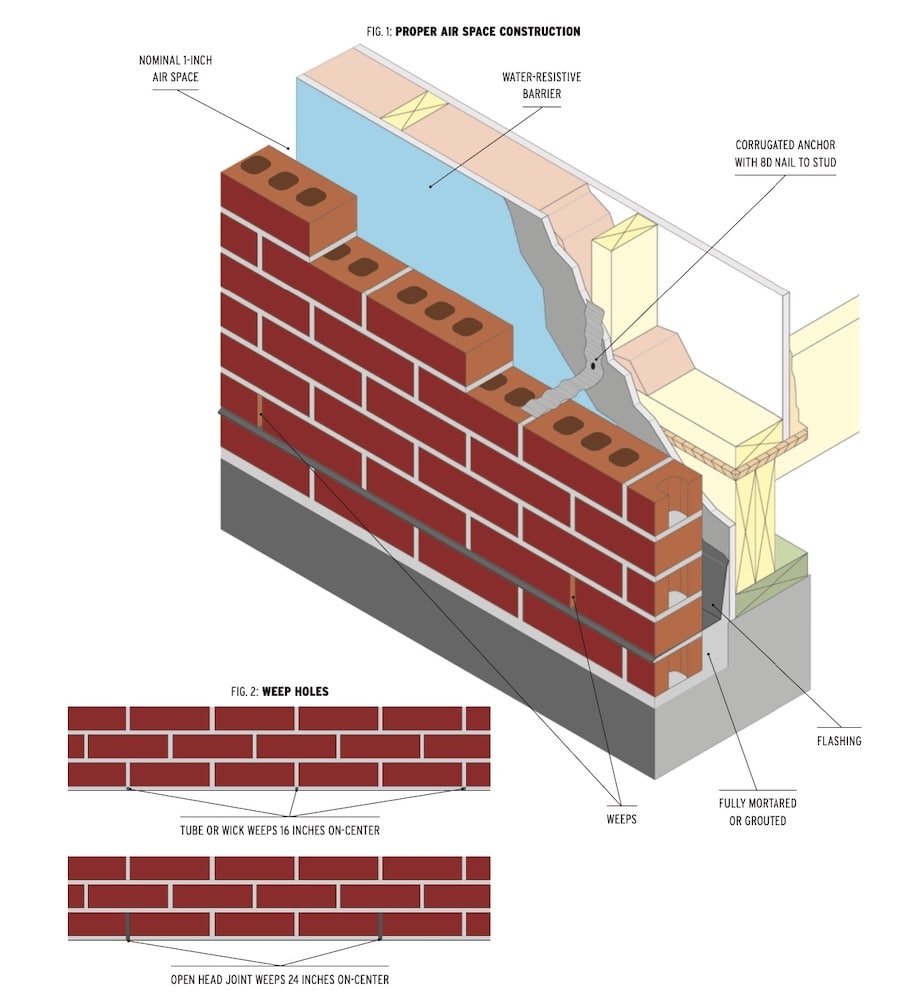
2. Create Weep Holes to Aid Drainage in Brick Veneer Walls
For a finished wall, open-head weeps are the best option because they’re free-draining and easy to create: simply, do not mortar the vertical joints between the bottom course of bricks every 24 inches (Fig. 2, above).
If you’re worried about insects getting behind the veneer or you don’t like the look of open weeps, consider plastic or noncorrosive weep-hole vents that are sold in colors that match different types of brick. Another option is to install a mortar net at the base of the wall to keep the air cavity clear around the weeps.
3. Manage Homeowners So They Don't Sabotage the Wall's Drainage System
Even if the bricklayers do everything right, some homeowners will still sabotage the drainage system. They worry that open weeps will let insects or mice into the structure so they fill weeps with mortar or caulk on their own. They may also clog the weeps with landscaping material.
Builders need to make sure homeowners understand what weeps in walls do regarding moisture control, why they’re so important, and instruct homeowners not to fill them. Many builders use the home’s final walk-through to tell homeowners about weep holes, but some owners still don’t get the message. I suggest you place more emphasis on that conversation and also on inspecting the weeps during any post-sale inspections or warranty calls.
Clem Newcamp drives quality and performance in home building as a building performance specialist on the PERFORM Builder Solutions team at IBACOS.
